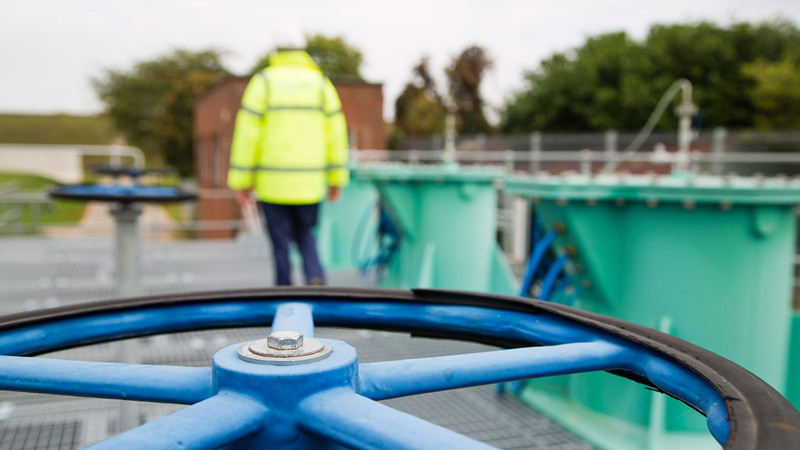Delivery partner principles: Supercharging the water sector supply chain
How do you solve a problem like AMP8?
Asset Management Period 8 (AMP8) should present an unparalleled opportunity for the water sector, with water firms across England and Wales collectively calling for nearly £100bn of funding between 2025 and 2030. But, against a backdrop of public, political and media scrutiny, driven by environmental breaches, rising household water bills and a general sense of a sector that hasn’t delivered for its customers – along with climate change and regulatory requirements – we instead look to what might be the most challenging period the sector has ever seen.
To overcome these challenges is to unlock the opportunity, and well-functioning infrastructure is key. That means building new assets and upgrading those that are ageing. To do this better, faster and at good value for the taxpayer requires a multifaceted approach. The industry can’t achieve today’s transformative goals with yesterday’s approaches. It needs committed partners with the networks, knowledge, vision and integrity to shake up processes and improve outcomes. Put simply, a high-performing supply chain must be at the heart of the solution.
It begins with integration
The depth and breadth of supply chain needed to deliver the AMP8 infrastructure is considerable. Ensuring every organisation is aligned to the same objectives is essential to success, but this isn’t always easy, especially if a client isn’t structured or resourced to handle so many relationships across a range of disciplines.
There is, of course, a hierarchy within the supply chain, and getting it right at the top sets the tone. A delivery partner – an increasingly common choice, as explained by Mace’s COO for Consultancy, Davendra Dabasia – provides water companies with a trusted pair of hands. Not only does the delivery partner help to set and permeate the vision, mission and values that are fundamental to tying an integrated team together, but it takes on the responsibility of procuring and then managing the suppliers that deliver the work on the ground. Central to the approach is enabling people across the supply chain to learn, develop and grow together.
Procurement: tried, tested, trusted, turbocharged
Time isn’t on the side of the sector. Improvements to performance are needed now. Respondents to an Ofwat survey in late 2022 showed trust is sorely lacking in water firms. Only 25% of respondents believe that water companies put customer interests first, and just 27% believe that they are acting in the interests of the environment. These things matter, clearly, and being able to hit the ground running and mobilise a talented supply chain quickly is important for AMP8 to get off to a good start. This requires delivery partners to have two things: the confidence and capability to procure large packages of work, and an existing list of trusted suppliers that can be relied on to submit competitive and compelling bids – and subsequently work well within the project structure.
Across major infrastructure programmes in transport, defence, energy and utilities, Mace procures hundreds of millions of pounds of work on behalf of its clients each year. By drawing on our extensive supplier portfolio and industry relationships, we know which suppliers are right for the job. It’s an approach that leverages tried and tested relationships and a track record of success on high-stakes schemes to give clients and suppliers confidence in the method, each other and themselves.
This blend of experience and confidence can help to turbocharge procurement, empowering the delivery partner to get the right suppliers assigned to the right packages of work quickly and at good value for the taxpayer. This matters to the water industry because best practice at this stage sets a performance precedent, while achieving good value optimises the cost of products and services. Performance and cost reduction both feed through to customer sentiment, and we all know that the customer is king.
Maintaining performance with risk and reward
Major infrastructure programmes within the water sector last a long time; one of the biggest we’ve seen in recent times – Thames Tideway Tunnel – will have taken around ten years when complete. So, while a precedent can be set at start of a project lifecycle, mechanisms are needed throughout to keep everything on track. The delivery partner model does this though incentivisation mechanisms that boost motivation and commitment. And, crucially, it’s shared.
The delivery partner model encourages a sense of shared accountability across the client, consultant and subcontractors, with clearly defined and pre-agreed KPIs setting expectations. Linked to these KPIs will often be a financial incentive, although with as much emphasis on rewarding good performance as on financially penalising suppliers for not meeting an objective. Making this shared accountability clear at the point of tender and baking incentivisation into contracts ensures full transparency so that prospective bidders can make a decision on whether the job is financially viable for them.
Indeed, it is crucial that small and medium sized suppliers operating within the water sector are supported. The intention is that appropriate incentivisation mechanisms not only provide them with an opportunity for financial betterment, but the motivation to step up a gear and find ways to deliver at pace, with quality and to budget.
The scale of AMP8 in terms of expenditure and infrastructure needed is considerable, and improvements to procurement and supply chain management only scratch the surface of what a dedicated delivery partner can do to unlock the opportunity. A problem as big as AMP8 needs a multifaceted solution. But there needs to be consistency; a guiding mind that ties together the various strands and drives a common vision. Whatever the region and its specific pressures, AMP8 must herald a period of efficient infrastructure delivery that achieves value for money and begins to resolve the sector’s under-fire environmental record.











